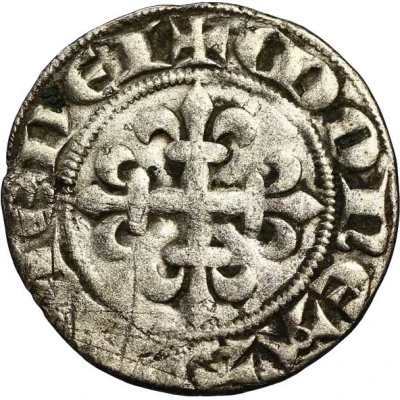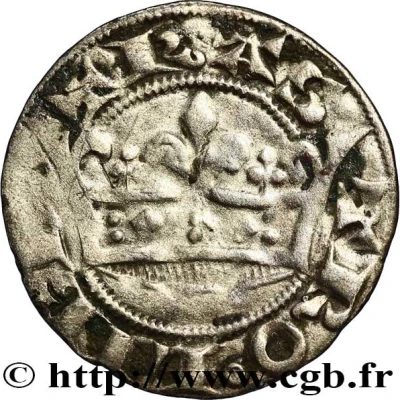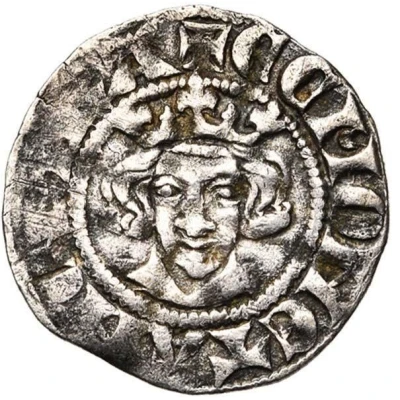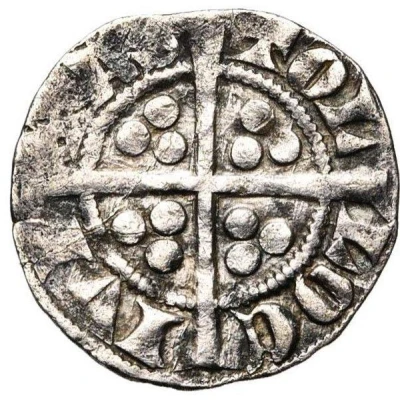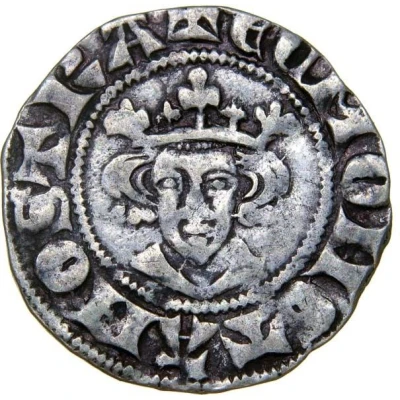
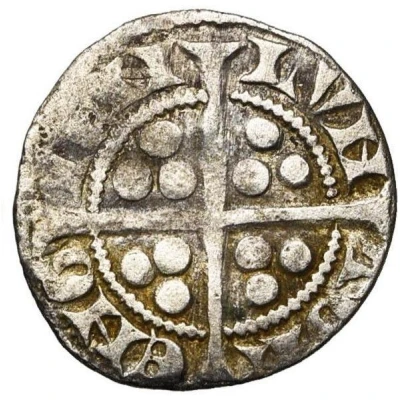

Obverse © CGB – Reverse © Jean Elsen & ses Fils s.a.
Sterling - John of Arzilières or Amedeus of Geneva LVN TOL ЄNG IЄN ND
| Silver | 1.15 g | 18 mm |
| Issuer | Bishopric of Toul (French States) |
|---|---|
| Bishop | John II of Arzilières (1309-1320) Amedeus of Geneva (1320-1330) |
| Type | Standard circulation coin |
| Years | 1310-1330 |
| Value | 1 Sterling (1⁄60) |
| Currency | Livre |
| Composition | Silver |
| Weight | 1.15 g |
| Diameter | 18 mm |
| Shape | Round (irregular) |
| Technique | Hammered |
| Orientation | Variable alignment ↺ |
| Demonetized | Yes |
| Updated | 2024-10-04 |
| Numista | N#331544 |
|---|---|
| Rarity index | 100% |
Reverse
Long cross pattée dividing inner circle and legend, three pellets in each quarter.
Script: Latin
Lettering: LVN TOL ENG IEN
Comment
Elsen proposes that the unusual legends on both sides of this coin are explained by a monetary union between the Bishopric of Toul and the Duchy of Lorraine. It is known that such a union began between Bishop Odo III of Grandson and Duke Theobald II in 1308 (de Saulcy p. 47). Elsen points out the similarity in the legend on the cross side between this coin and the Sterling of Frederick IV of Lorraine (see link), suggesting the union persisted into that reign, which would correspond to the reigns in Toul of Bishops John of Arzilieres (1310-1321) and Amadeo of Geneva (1321-1330).It was also likely known to the engravers of both coins that LVN TOL ... (on the Toul Sterling) and LON TOR ... (on the Lorraine Sterling) would closely mimic the mint name on the English penny which both of these were mimicking.
Interesting fact
One interesting fact about this coin is that it was minted during a time of great turmoil in Europe, particularly in the Bishopric of Toul, which was a small state located in the northeastern part of France. The coin was issued by either John of Arzilières or Amedeus of Geneva, who were both influential figures in the region during the early 14th century. Despite the challenges of the time, the coin still maintains a high level of craftsmanship and beauty, showcasing the skill of the medieval mint masters who created it.
